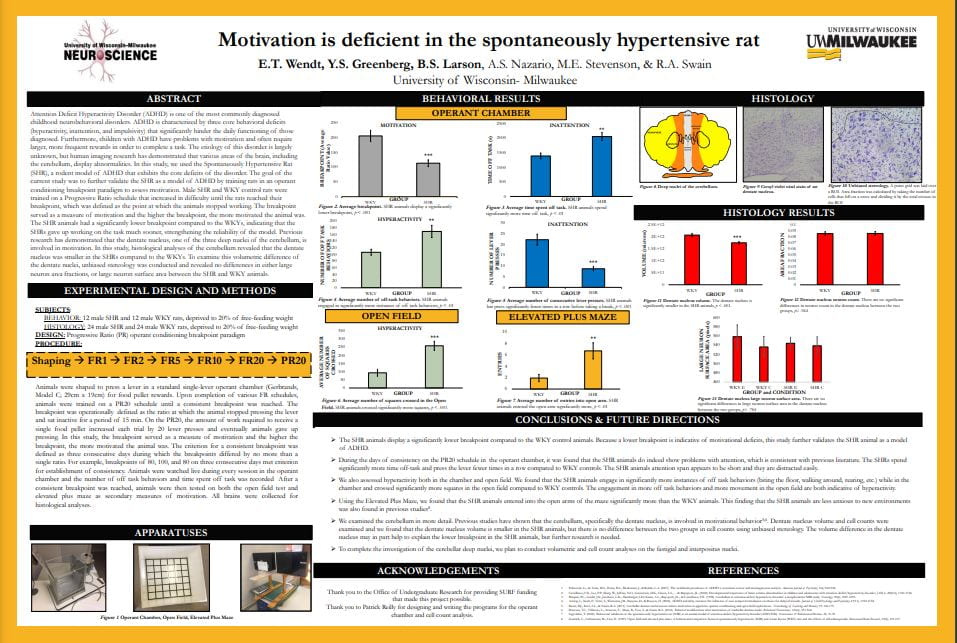Eric Wendt, Brittany Larson & Yael Greenberg, “Motivation is Deficient in the Spontaneously Hypertensive Rat (SHR)”
Mentor: Rodney Swain, Psychology
Attention Deficit Hyperactivity Disorder (ADHD) is one of the most commonly diagnosed childhood neurobehavioral disorders. ADHD is characterized by three core behavioral deficits (hyperactivity, inattention, and impulsivity) that significantly hinder the daily functioning of those diagnosed. Furthermore, children with ADHD have problems with motivation and often require larger, more frequent rewards in order to complete a task. The etiology of this disorder is largely unknown, but human imaging research has demonstrated that various areas of the brain, including the cerebellum, display abnormalities. In this study, we used the Spontaneously Hypertensive Rat (SHR), a rodent model of ADHD that exhibits the core deficits of the disorder. The goal of the current study was to further validate the SHR as a model of ADHD by training rats in an operant conditioning breakpoint paradigm to assess motivation. Male SHR and WKY control rats were trained on a Progressive Ratio schedule that increased in difficulty until the rats reached their breakpoint, which was defined as the point at which the animals stopped working. The breakpoint served as a measure of motivation and the higher the breakpoint, the more motivated the animal was. The SHR animals had a significantly lower breakpoint compared to the WKYs, indicating that the SHRs gave up working on the task much sooner, strengthening the reliability of the model. Previous research has demonstrated that the dentate nucleus, one of the three deep nuclei of the cerebellum, is involved in motivation. In this study, histological analyses of the cerebellum revealed that the dentate nucleus was smaller in the SHRs compared to the WKYs. To examine this volumetric difference of the dentate nuclei, unbiased stereology was conducted and revealed no differences in either large neuron area fractions, or large neuron surface area between the SHR and WKY animals.
Click on the thumbnail below to open the full sized poster in a new tab.

This research on ADHD is important and I appreciated reading about your project. Instead of including your entire abstract at the beginning of your poster, I would suggest just adding a bit of background information. This would free up space to enlarge the images of the apparatuses and histology and give a visual break from chucks of text. Otherwise, great presentation!